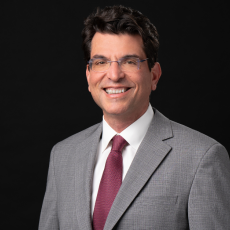Jason, given your past in the Bipartisan Policy Center, did you decide to join the ACP because you saw much ground for bipartisanship in the clean power industry?
I spent most of my career focused on building a durable national policy and an energy climate policy, and I found that these two ideas intersect at the American Clean Power Association. The adoption of the IRA is an inflection point both regarding the public commitment and the strategic approach to climate change. For the last 30 years there has been the premise that the solution to climate change depended upon regulation, and we now have a solution that finally resonates across the entire political spectrum. However, the process used to adopt the law was very partisan and polarized, so our mission is to reveal the true, broad national support for innovation towards a sustainable energy and climate transition.
Would you say that there exists considerable difference between states in terms of their readiness to adopt clean power?
For the last 20 years, the most successful in the climate debate were the fighters, but the future belongs to the fixers and the doers who care about building economic development, national security, and environmental quality. The Coastal states tend to care more about climate change, but the renewable resources are in the middle, which means investments will go predominantly to historically conservative republican-led states. This propensity assures durable policies, which are vital for the economic engine of success.
Could you introduce us to the main activities of the ACP?
For the last two decades, wind or solar power groups existed in their own collaborative but separate lanes, so the first design premise of the ACP was to bring all these technologies together into one shared advocacy. There are many different business models within the renewable power sector. Traditionally, there has been considerable competition among those that are the geographic owner of service territory and the companies that produce and sell renewable power in those regions. The realization was that the competition between these two factions had to be metabolized in a constructive way, and, by bringing together 750 players of the industry, we try to convey a unified voice of the entire clean energy sector.
What proportion of the American energy supply is renewable and how do you see that evolving in the coming years?

Renewable power currently amounts to about 15% of our electricity supply, with the prospect to grow exponentially over the next 30 years, considering the U.S. needs to achieve a net zero profile by mid-century.
To reach this goal we must make vast infrastructure investments, as well as streamline the approval process of cross-state transmission lines. While extremely valuable for power generation, IRA is overlooking the importance of energy transmission, which is further hindered by the regulatory structure in the U.S. Now that we need to move vast amounts of low-cost clean power from Arizona to California, the whole imagination of a local power company does not match the obligations of the 21st century. Electrons move a lot faster than public service, and in this entire debate, our scarcest commodity is time.
One year after its adoption, how is the IRA transforming the energy landscape of the U.S. in concrete terms?
Instead of using the old taxes system meant to provide economic benefit for those externalities, with the advent of the IRA we now have a ten-year investible incentive structure which has animated incredible private investment. During the past ten months, there has already been over $200 billion injected in the clean power sector. In addition, massive investments in domestic manufacturing have also been made, 69 new facilities being started up since the beginning of the year. Steel plants that have been shuttered for 20 years are starting back up and additional lines for wind power towers and solar panels manufacturing have been inaugurated. There is a very strong transatlantic desire to become independent from China's renewable power supply chain, and, instead, near-shore it as much as possible.
The ACP has released a proposed framework to support the development of renewable green hydrogen in the U.S. What does this initiative consist of?
When it comes to steel, cement, and heavy-duty transportation, it is hard to directly electrify those processes because they require so much heat and are dependent on some type of combustion process. Given that green hydrogen acts a lot like natural gas, it is a perfect fit for these applications, acting as one of the key solutions to one of the most intractable parts of the climate challenge. Finding the right incentive package to support this technology in a market that is trying to be developed in real-time is no easy feat. In this context, we suggest providing strong incentives in the first several years of the program to make sure the industry gets off the ground. Besides, we are also proposing to be both more aggressive and more flexible than the EU, employing a slightly different approach that has the same result.
If you were to synthesize your rich experience, what must we focus on as a society to achieve the green transition before it is too late?
Embracing the climate change solution with the same urgency we embraced the problem is an important first step. Literally transitioning the global economy in 30 or 40 years is an unthinkable challenge, so we have to be creative if we want to achieve this goal. We all must tolerate some aspect of the clean energy transition in our lives, whether peering over the horizon and seeing a wind turbine, or having power lines go through rural America. There are always going to be tradeoffs, and if we are going to prioritize energy security and climate, we need to not only make those the dominant societal goals, but to also be willing to make the tough choices necessary to achieve them.




